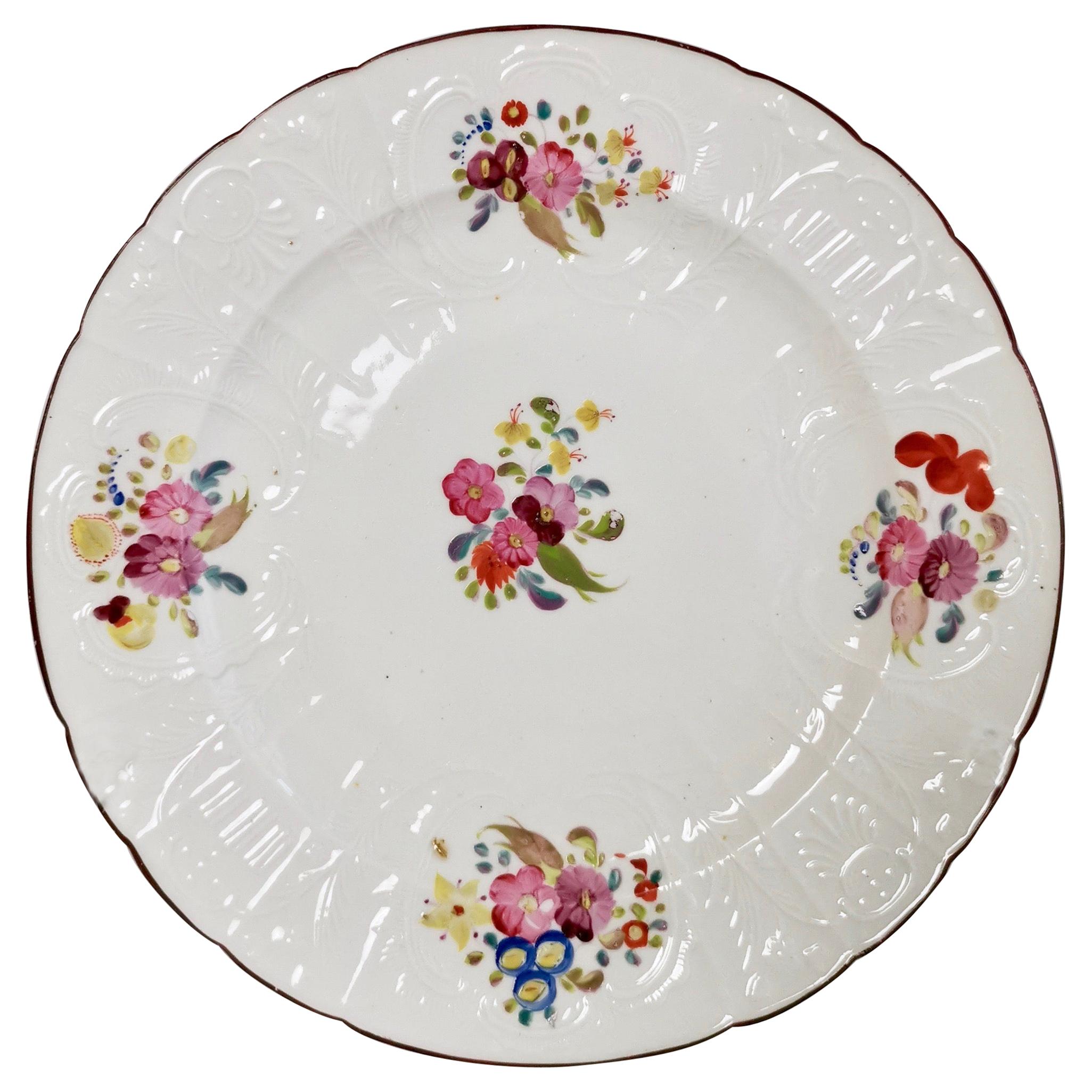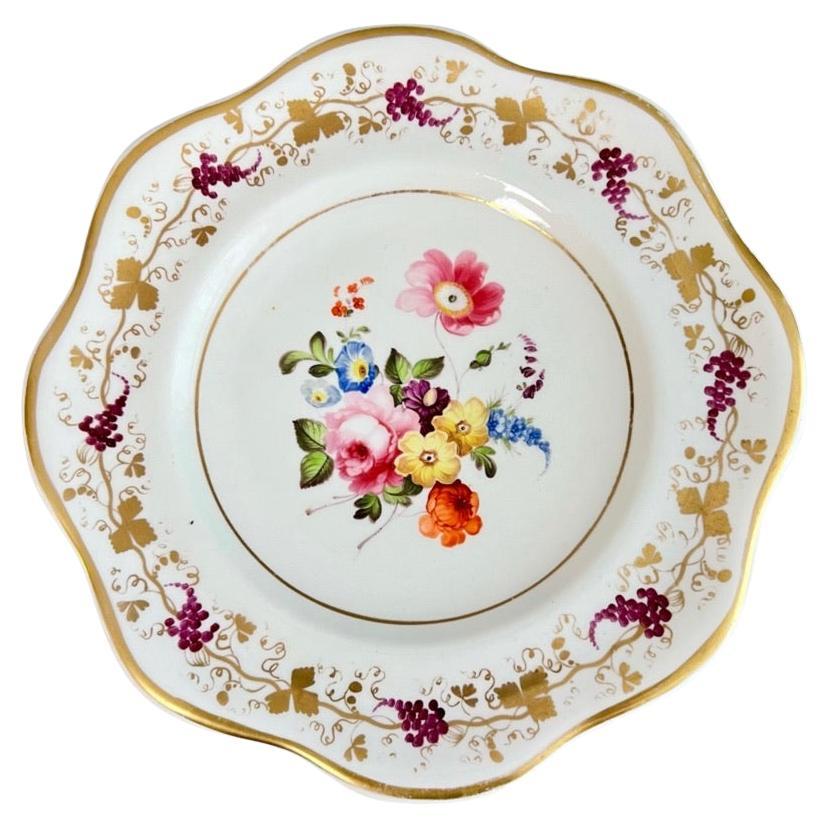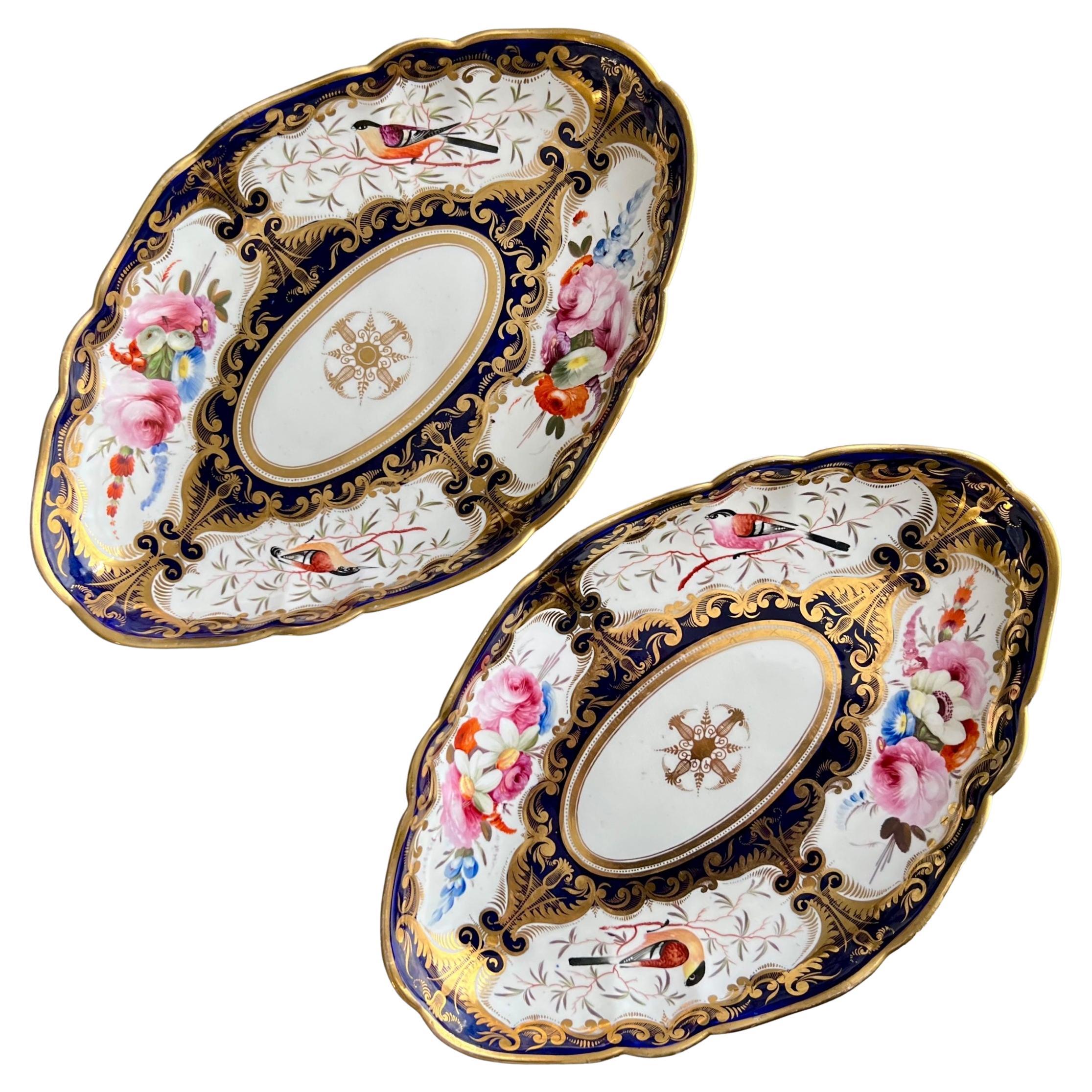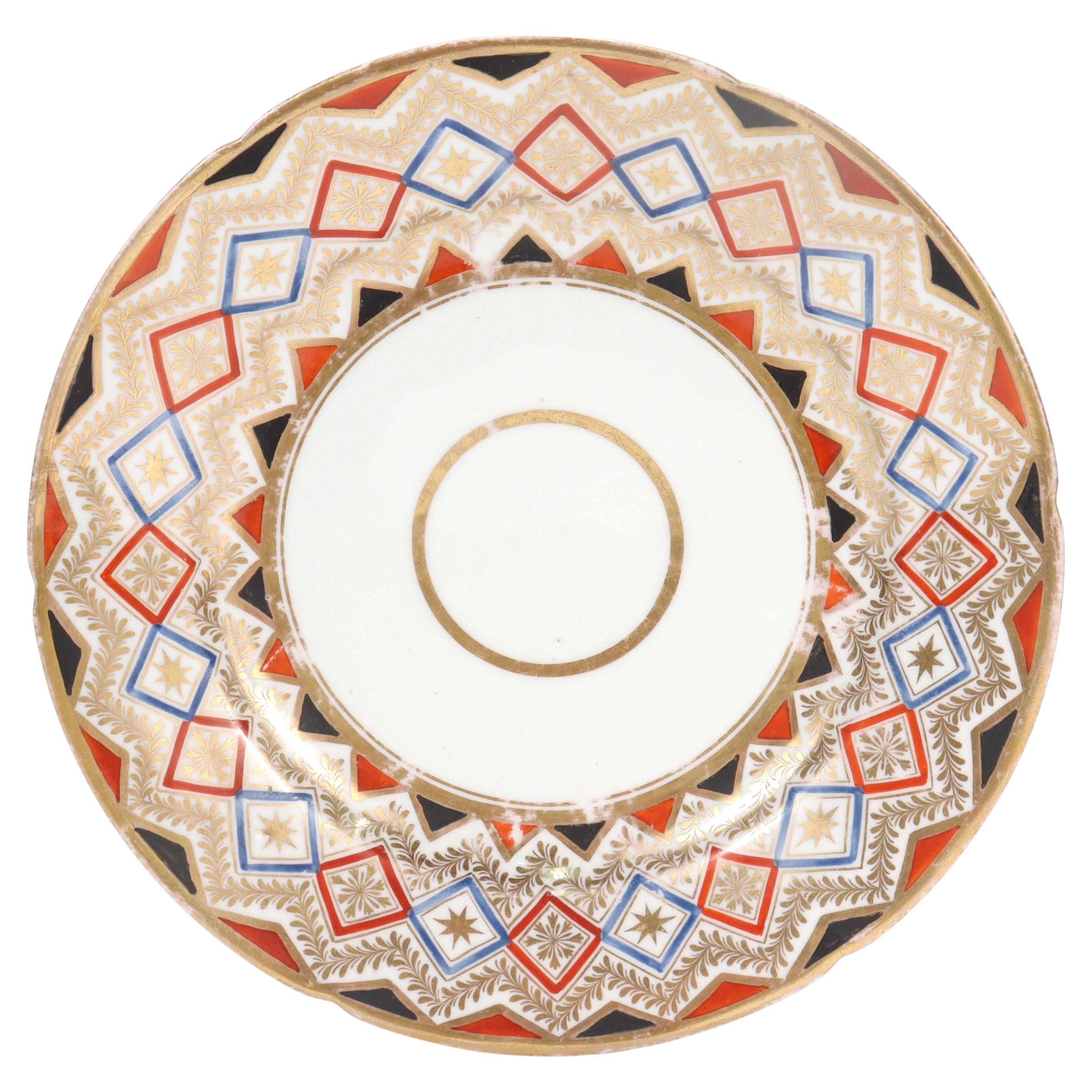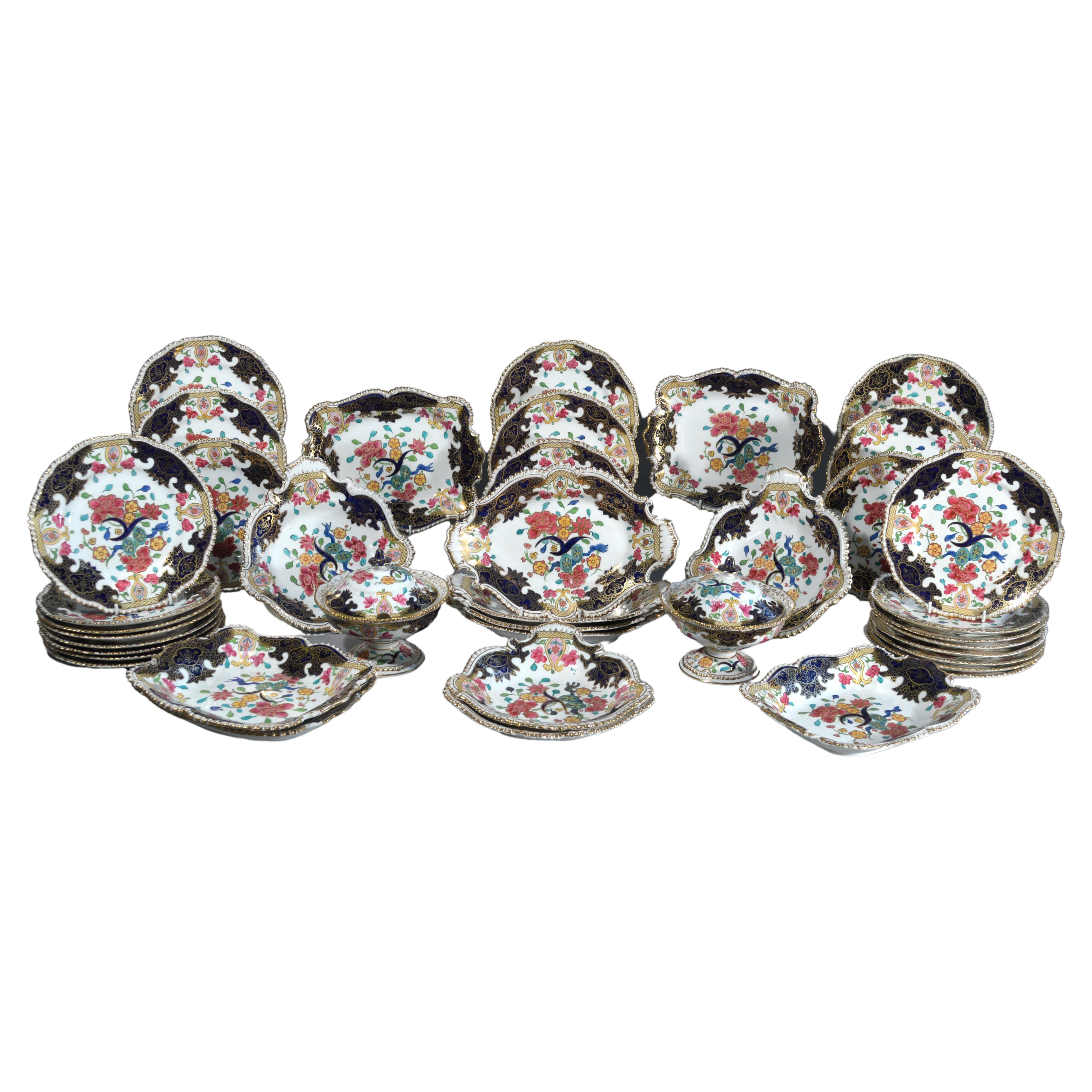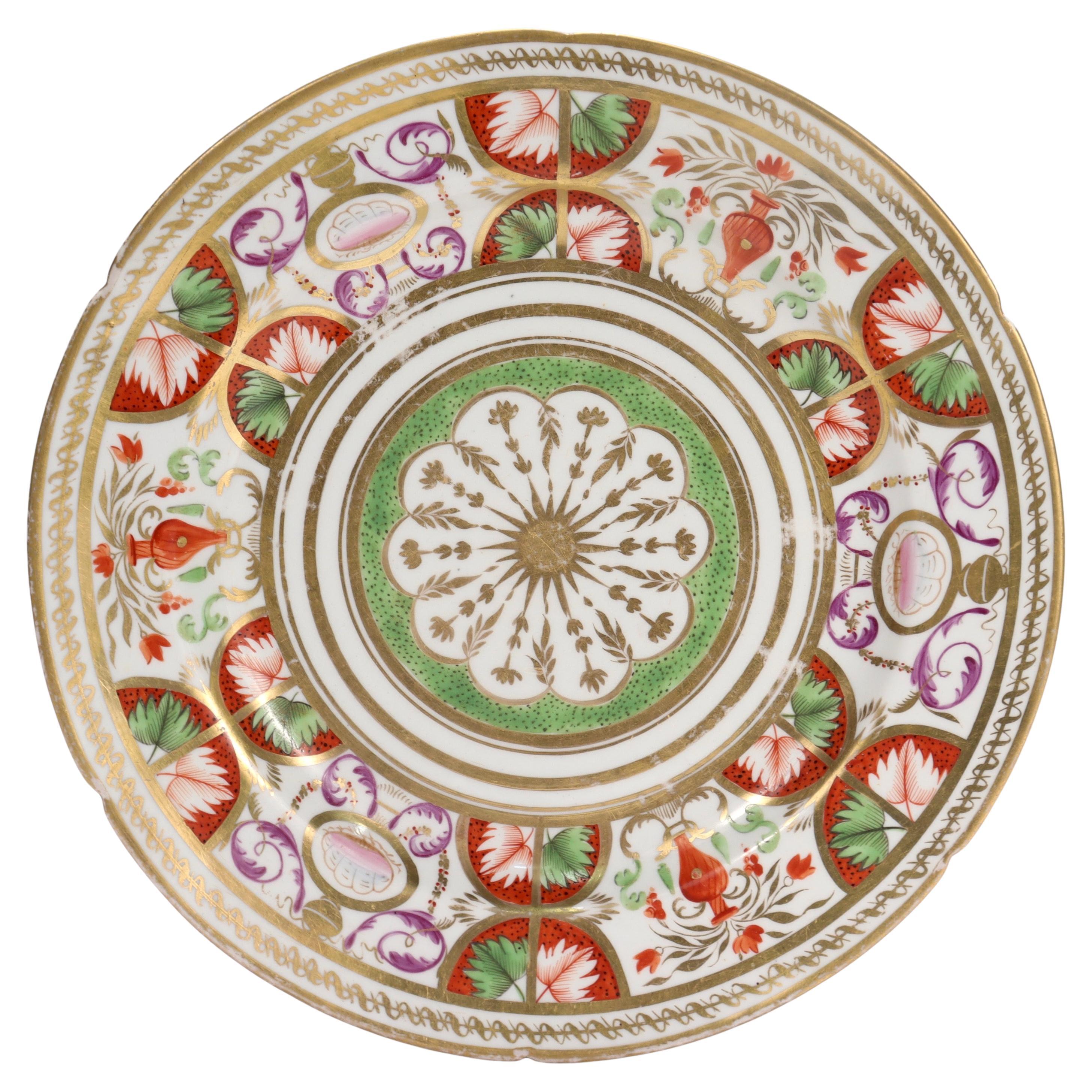Items Similar to Coalport Porcelain Plate, New Embossed Relief Moulded with Birds, Regency ca1815
Want more images or videos?
Request additional images or videos from the seller
1 of 16
Coalport Porcelain Plate, New Embossed Relief Moulded with Birds, Regency ca1815
About the Item
This is a very rare and beautiful plate made by Coalport between 1815 and 1820. The plate is relief moulded in the "New Embossed" shape and has a fabulous pattern in cobalt blue, gilt and beautiful birds.
Plates with this particular model of relief moulding, particularly with such beautiful birds, are rare so this is a real collectors' item.
Coalport was one of the leading potters in 19th and 20th Century Staffordshire. They worked alongside other great potters such as Spode, Davenport and Minton, and came out with many innovative designs. When we say "Coalport" we usually think of the one Coalport factory that became famous, but in its beginning years there were two factories, one run by John Rose and the other by his brother Thomas Rose. Thomas Rose went into partnership with Robert Anstice and Robert Horton and they were located directly opposite John Rose, across the canal. The brothers' factories had much in common with each other and they shared many different shapes and patterns. Ultimately, the John Rose factory proved more profitable and John Rose bought Thomas' factory in 1814, making it the one Coalport factory that became so famous. Many of the Coalport items, of either factory, are now collectors' items.
The "New Embossed" relief-moulded style was brought out in 1815. This plate has a beautiful cobalt blue ground and the relief-moulded roses are left white and picked of in gold. There are four small flower reserves on the rim, and the centre of the plate has a stunning painting of two birds against a rural backdrop, one bird balancing off a tree branch (with no sense of perspective) just about to snack on an insect, the other bird watching, perhaps a little jealous.
The plate is marked with the impressed "2" that was used around this period.
Condition Report The plate is in good antique condition without any damage or repairs, however it is heavily crazed as many plates of this era are. The decoration is bright and fresh and there is very little wear.
Antique British porcelain is never perfect. Kilns were fired on coal in the 1800s, and this meant that china from that period can have some firing specks from flying particles. British makers were also known for their experimentation, and sometimes this resulted in technically imperfect results. Due to the shrinkage in the kiln, items can have small firing lines or develop crazing over time, which should not be seen as damage but as an imperfection of the maker's recipes, probably unknown at the time of making. Items have often been used for many years and can have normal signs of wear, and gilt can have signs of slight disintegration even if never handled. I will reflect any damage, repairs, obvious stress marks, crazing or heavy wear in the item description but some minor scratches, nicks, stains and gilt disintegration can be normal for vintage items and need to be taken into account.
There is widespread confusion on the internet about the difference between chips and nicks, or hairlines and cracks. I will reflect any damage as truthfully as I can, i.e. a nick is a tiny bit of damage smaller than 1mm and a chip is something you can easily see with the eye; a glazing line is a break in the glazing only; hairline is extremely tight and/or superficial and not picked up by the finger; and a crack is obvious both to the eye and the finger.
Dimensions (diameters): 21.5cm (8.5").
- Creator:Coalport Porcelain (Maker)
- Dimensions:Height: 0.75 in (1.91 cm)Diameter: 8.5 in (21.59 cm)
- Style:Regency (Of the Period)
- Materials and Techniques:
- Place of Origin:
- Period:
- Date of Manufacture:circa 1815
- Condition:Wear consistent with age and use. In good antique condition without any damage or repairs and very little wear; however, it is crazed.
- Seller Location:London, GB
- Reference Number:
About the Seller
5.0
Gold Seller
These expertly vetted sellers are highly rated and consistently exceed customer expectations.
Established in 2016
1stDibs seller since 2019
208 sales on 1stDibs
Typical response time: 1 hour
- ShippingRetrieving quote...Ships From: London, United Kingdom
- Return PolicyA return for this item may be initiated within 14 days of delivery.
More From This SellerView All
- Coalport John Rose Porcelain Plate, White Floral Dulong Blind-Moulded circa 1815By Coalport Porcelain, John RoseLocated in London, GBThis is a beautiful dessert plate made by Coalport in circa 1815. Coalport was one of the leading potters in 19th and 20th century Staffordshire. They worked alongside other great...Category
Antique 1810s English Regency Dinner Plates
MaterialsPorcelain
- Coalport Porcelain Plate, White with Handpainted Flowers, Regency ca 1820By Coalport PorcelainLocated in London, GBThis is a beautiful plate made by Coalport around the year 1820. The plate is decorated in white with a simple gilt rim, darting puce and gilt vines, and a wonderful hand painted bou...Category
Antique 1820s English Regency Dinner Plates
MaterialsPorcelain
- Pair of Coalport Porcelain Oval Dishes, Flowers & Birds Patt.759, Regency ca1815By Coalport PorcelainLocated in London, GBThis is a spectacular pair of oval dishes made by Coalport between 1815 and 1820. The dishes bear the famous and very wonderful bird pattern with the number 759. Panels with stunning hand painted birds and flowers are set in a cobalt blue background with rich gilt decoration. This pattern is very desired and doesn't come to the market often, so this is a rare opportunity. Coalport was one of the leading potters in 19th and 20th Century Staffordshire. They worked alongside other great potters such as Spode, Davenport and Minton, and came out with many innovative designs. When we say "Coalport" we usually think of the one Coalport factory that became famous, but in its beginning years there were two factories, one run by John Rose and the other by his brother Thomas Rose. Thomas Rose went into partnership with Robert Anstice and Robert Horton and they were located directly opposite John Rose, across the canal. The brothers' factories had much in common with each other and they shared many different shapes and patterns. Ultimately, the John Rose factory proved more profitable and John Rose bought Thomas' factory in 1814, making it the one Coalport factory that became so famous. Many of the Coalport items, of either factory, are now collectors' items. The stunning thing about pattern 759 is that each bird is different, as well as each flower formation. All birds and flowers are painted carefully in their own colours; they are all different species. Each bird is an individual with its own expression; in fact I once had a large dinner service...Category
Antique 1810s English Regency Serving Bowls
MaterialsPorcelain
- Coalport Plate, Windsor Castle with Deer, Sepia, Thomas Baxter, Georgian ca 1805By Coalport Porcelain, John Rose, Thomas BaxterLocated in London, GBThis is a beautiful and very rare dessert plate made by Coalport in circa 1805, which was the late Georgian era. The plate is decorated with a superbly painted named landscape of Win...Category
Antique Early 1800s English George III Dinner Plates
MaterialsPorcelain
- Coalport John Rose Porcelain Dessert Service, Imari Pattern, ca 1805By Coalport Porcelain, John RoseLocated in London, GBThis is a rather stunning 25-piece dessert service made by John Rose at Coalport around the year 1805. It consists a centre piece on four feet, two oval dishes, two shell dishes, two...Category
Antique Early 1800s English George III Dinner Plates
MaterialsPorcelain
- Coalport John Rose Porcelain Plate, Cobalt Blue, Gilt, Flowers & Fruits, 1805-15By Coalport Porcelain, John RoseLocated in London, GBThis is a stunning plate made by John Rose at Coalport between 1805 and 1815. The plate is decorated in underglaze cobalt blue and has beautifully hand painted flowers and fruits, an...Category
Antique 1810s English Regency Dinner Plates
MaterialsPorcelain
You May Also Like
- Antique Coalport English Porcelain Neoclassical PlateBy Coalport PorcelainLocated in Philadelphia, PAA fine English Neoclassical porcelain plate. By Coalport. Decorated throughout with alternating red and blue geometric patterns, gil...Category
Antique Early 19th Century English Neoclassical Porcelain
MaterialsPorcelain
- Regency Large Coalport Porcelain Dessert Service-Thirty Nine PiecesBy Coalport PorcelainLocated in Downingtown, PARegency-period Coalport Porcelain service is of the finest quality in terms of the porcelain itself and the decoration, each shape is particularly well designed with a distinctive sh...Category
Antique Early 19th Century English Regency Porcelain
MaterialsPorcelain
- Antique English Neoclassical Porcelain Plate attributed to CoalportBy Coalport PorcelainLocated in Philadelphia, PAA fine antique English Neoclassical porcelain plate Attributed to Coalport. Decorated throughout with rich gilding, and red, green,...Category
Antique Early 19th Century English Neoclassical Porcelain
MaterialsPorcelain
- Pair of 19th Century English Coalport Porcelain PlatesBy Coalport PorcelainLocated in Atlanta, GAPair of large Coalport Porcelain plates with gilt rim and accents, floral decoration in blues, reds, and greens. 19th century England. Price i...Category
Antique 19th Century English Porcelain
MaterialsPorcelain
- Set of Antique Coalport Porcelain Dinner Plates Depicting English FishBy Coalport PorcelainLocated in London, GBSet of antique coalport porcelain dinner plates depicting English fish. English, late 19th century Dimensions: Height 2cm, diameter 22cm ...Category
Antique Late 19th Century English Porcelain
MaterialsPorcelain
- Set of 12 Coalport Hand Painted Exotic Bird Lapis Blue & Gilt Soup Bowls PlatesBy Coalport PorcelainLocated in Great Barrington, MARimmed soup bowls are in demand and this set of 12 Coalport hand painted bowls are perfect for soup, pasta and desserts as their large size makes...Category
Antique Early 1900s English Porcelain
MaterialsPorcelain
Recently Viewed
View AllMore Ways To Browse
Porcelain Kitchen
Vintage Gold Plates
Antique Plate Designs
Plates For Decoration
Antique Plates 19th Century
19th Century Plate Antique
Silver Plated Item
Silver Plated Handles
Glass Reliefs
Rose Plates
Rare Antique Plates
Collectors Plates
Collector Plates
England Antique Plates
Blue Gold Plates
Plates Gold Blue
Bird Plates
Blue And Gold Plates
